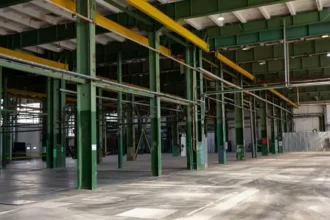Money moves faster than ever. From mobile apps to digital wallets, payments have become more than a transaction. They are now part of a vast network that links people, businesses, and banks across the world.
The rise of connected payments is changing how money flows. It is also reshaping the systems that power the global economy.
How Technology Links Every Payment
Behind every tap or online purchase sits a growing web of technology. It ties merchants, customers, and banks into one digital chain. A connected payments platform allows these links to happen in real time. It handles authorizations, transfers, and confirmations in seconds.
The experience feels instant to users, but the systems behind it are complex. Every data point, from location to device type, plays a role in verifying transactions. This technology creates a level of speed and accuracy that old systems could never match.
The Push Toward Global Integration
Businesses now sell beyond borders. A designer in New York can serve a customer in Paris. A small shop in Lisbon can ship to Seoul. These global ties need reliable payment solutions. Connected systems allow money to cross currencies and countries with fewer barriers.
Banks and fintech companies work together to remove friction. The goal is simple. Make global payments as easy as local ones. This push for integration is what makes connected networks so powerful.
Faster Transactions, Happier Customers
Speed matters in finance. No one wants to wait days for a payment to clear. Instant transactions build trust. When customers see their payments process right away, confidence grows.
The business benefits too. Cash flow improves because funds arrive sooner. Connected systems also reduce errors that can slow things down. The result is a smoother experience for everyone. A fast, secure system keeps customers loyal and operations efficient.
Data Becomes the New Advantage
Every transaction carries useful information. Patterns show where people shop, how much they spend, and what methods they use. Connected payment networks turn this data into insight. Businesses can track spending trends and predict demand. Banks can spot risks before they turn into losses.
Even governments gain a clearer view of economic activity. The ability to analyze real-time data gives organizations a huge advantage. It turns payments from a simple exchange into a tool for smarter decisions.
Security and Transparency at the Core
The rise of digital payments also raises new security challenges. Fraud, identity theft, and cyber threats remain real concerns. Connected systems fight back with stronger encryption and smarter verification tools. Machine learning tracks suspicious activity as it happens.
Transparency is just as vital. Blockchain technology, for example, creates a clear record of each transaction. It ensures that money flows where it should. When users see this transparency, trust grows.
Financial Inclusion for the Underserved
Connected payments also create new chances for people left out of traditional banking. In many regions, digital wallets and mobile transfers have replaced the need for a physical bank account. Small businesses in developing countries now reach global customers with ease. Farmers can receive payments instantly. Freelancers can collect wages without long delays.
This inclusion fuels growth in places once held back by distance or bureaucracy. Technology gives more people access to financial tools that help them thrive.
The Ripple Effect on Financial Networks
As payment systems evolve, global financial networks evolve too. Banks now act as partners with tech firms. Central banks explore digital currencies to keep pace. Payment processors rethink their infrastructure to handle new traffic levels.
Each part of the network adapts to stay connected. The impact runs deep. What once took multiple intermediaries now happens in one seamless flow. The more connected payments grow, the more the world’s financial systems depend on them.
What the Future Holds
The future of connected payments looks even more dynamic. Artificial intelligence may soon predict when and how people will spend. Digital identity tools will make verification faster and safer. More regions will adopt instant payment systems that run 24/7.
The focus will stay on convenience, speed, and trust. These innovations will not only change how people pay. They will also redefine how global economies interact.
Final Thoughts
The world of money no longer moves in slow motion. Connected payments have turned it into a live network that never sleeps. They link people, businesses, and countries in ways that once seemed impossible. For consumers, the shift means more control. For companies, it means growth without borders. For the global economy, it means constant motion.
The systems that manage our payments may stay behind the scenes, but their impact reaches everywhere. The future of finance is connected, and that future has already begun.











